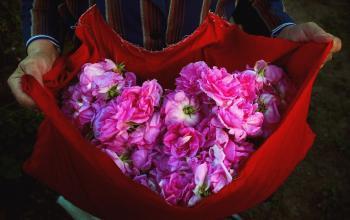Reducing, reusing, and recycling (the 3R’s) are the fundamental principles of living green.
There is no question of what to reduce. We would like to reduce the waste we produce and the amount of resources we consume throughout our daily lives so as to reduce carbon emissions, eradicate toxic substances introduced to our environment and food chains, and eventually stop using materials that Mother Nature cannot produce naturally, quickly, and in large quantities.
We would also like to reuse what we can. There is only so much landfill space on the planet, and once that becomes tight, people may start burning their garbage releasing toxic fumes into the air. Or they may start dumping their trash into our lakes and oceans, making many of these bodies of water uninhabitable for sea life or human recreation. Hold On! They’ve been doing that for many years already!
Finally, we would like to recycle, because many things made with some nonrenewable resources can be broken done and remade into new items, lessening the amount of new resources needed to produce such goods.
More often than not, these three principles complement each other and go hand in hand. Although these ideas are not rocket science, the vast majority of our consumer and manufacturing industries still consider the “almighty dollar” more important than the planet we live on. As a result, many who are trying to abide by the 3R’s have become indifferent, frustrated, or tired because they feel they are paddling upstream.
Although it can indeed be frustrating at times, we just have to have faith that with enough people paddling upstream, we may eventually reverse the current. Until every consumer/manufacturing company in the world goes green and there are easily accessible, usable, and viable infrastructures in place everywhere to make living green the “normal” way to live rather than an “alternative lifestyle,” we have to rely on each other for ideas, support, and encouragement.
Some Suggestions
Having said this much, I would like to suggest some simple, inexpensive, and practical ways to recycle some everyday household items. First, you look at the things you typically throw away and categorize them accordingly:
-Organic
-Recyclable
-Nonrecyclable
Organic items include food waste and scraps such as uneaten leftovers, rotten meats, dairy products, fruits, vegetables, or grains, or just about anything that came from a plant or animal. For these items, just go ahead and throw them away, happily and guilt free.
Recyclable items include things such as plastics, paper, glass, and metals. Different regions have the facilities to recycle different materials. So check with your local waste management service to see what items they will accept for recycling and familiarize yourself with their recycling protocol. Then it’s just a question of buying items produced and/or packaged with materials that you can recycle. For these items, use them until you cannot reuse them and then recycle them.
Nonrecyclable items include things that are not organic and cannot be easily recycled. Examples of these would be clothes, electronic devices, toys, games, things made with multiple materials, and so on. You can dismantle some of these things to recycle their recyclable components. You can donate items to charity. You can try not throwing them away by creating a new use for them.
Things simply are not “built to last” anymore. In the past, people would keep using something until it broke or wore out. Then they would fix it or refurbish it and keep using it until it was beyond repair.
Unfortunately, our society has made it difficult to resist the temptation of materialism. Whatever it is, everyone seems to need or to want the newest and the latest—but what to do with the old? Just throwing it away has become so common that you almost face ridicule if you don’t follow that trend. “Why are you still wearing that old ...?”
It’s simply not popular to reuse old things. Of course, just because something is popular, doesn’t mean it’s right. Standing up for what’s right in the face of what’s popular is rarely easy, but if people didn’t do this, humankind would have probably already destroyed itself and the planet.
For large household items like large appliances such as washing machines, refrigerators, televisions, and computers, this may be difficult. Dismantling some of these things can be dangerous and should be left to professionals. You can check with certain companies, for some will gladly pick up or take your old refrigerator, stove, furnace, and the like. When purchasing any of these items, check with the company to see if it provides a service to help you dispose of the product in an environmentally friendly way.
Furniture can be handed down, donated to charity, or repaired. Another alternative to buying a new couch or armchair could be having it refinished or reupholstered. Although this can be costly, it’s still cheaper than buying new items.
For smaller items, here a few suggestions:
-Toothbrushes can be reused as cleaning utensils.
-Resealable plastic food containers can be reused as leftover food containers or for freezer storage.
-Worn out hand and body towels, sheets, and old T-shirts can be used for cleanup in the garage or for other messes.
-Nonrecyclable metal containers or other hollow containers can be converted into pots for plants.
-Tires can be used for landscaping.
-Plastic grocery store bags can be used as trash liners.
-Books, magazines, and other reading materials that cannot be recycled can be donated to a local school or library.
-Worn out trash containers can be used for yard waste.
-Batteries (nonrechargeable), cell phones, and other small electronic devices can be given away or recycled at many local electronic stores.
-Old cinder blocks, bricks, and wooden materials can be used as landscaping materials.
-Glass jars can be reused as small oil lamps, food containers, or drinking glasses.
-Razor blades for shaving can be resharpened.
-Old shoes can be reused as work shoes in the garden, the workshop, or outdoor activities like camping, canoeing, or any other activity where you wouldn’t want to dirty your good shoes.
How to recycle the many things we use is only limited by your creativity. In our quest for a more eco-friendly way of life, it’s about turning the tide and reversing the current in which we are all paddling upstream. It is up those who are actively engaged in living green to show others that it is not necessarily difficult to do, so as to get more people to ignore the temptations of materialism and do what’s right.



Friends Read Free